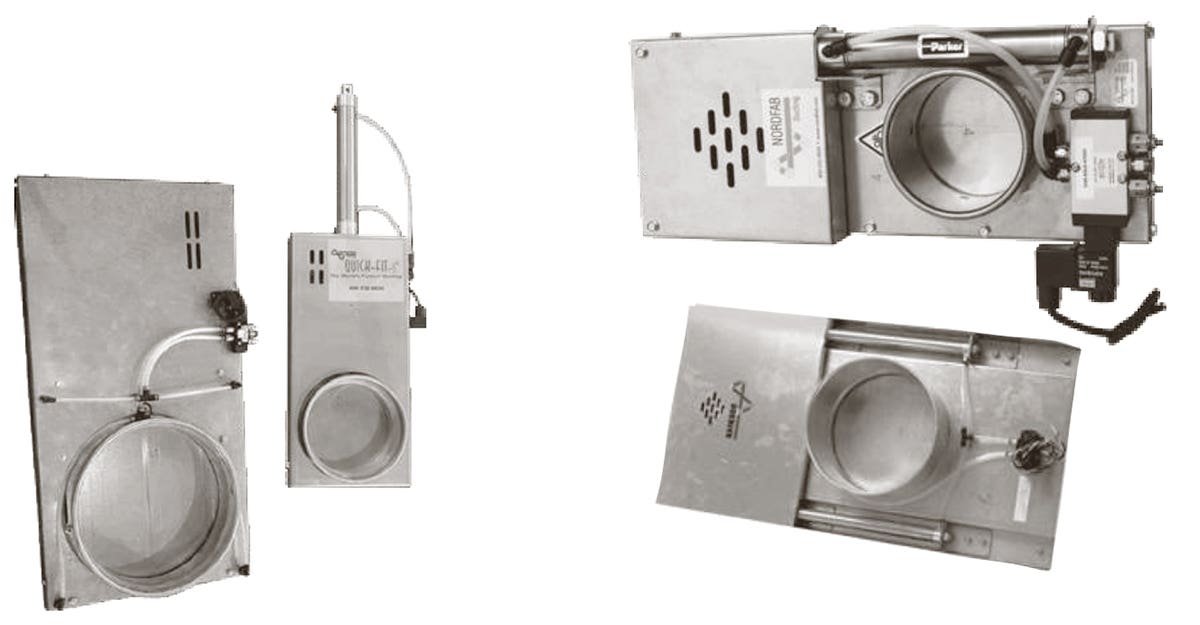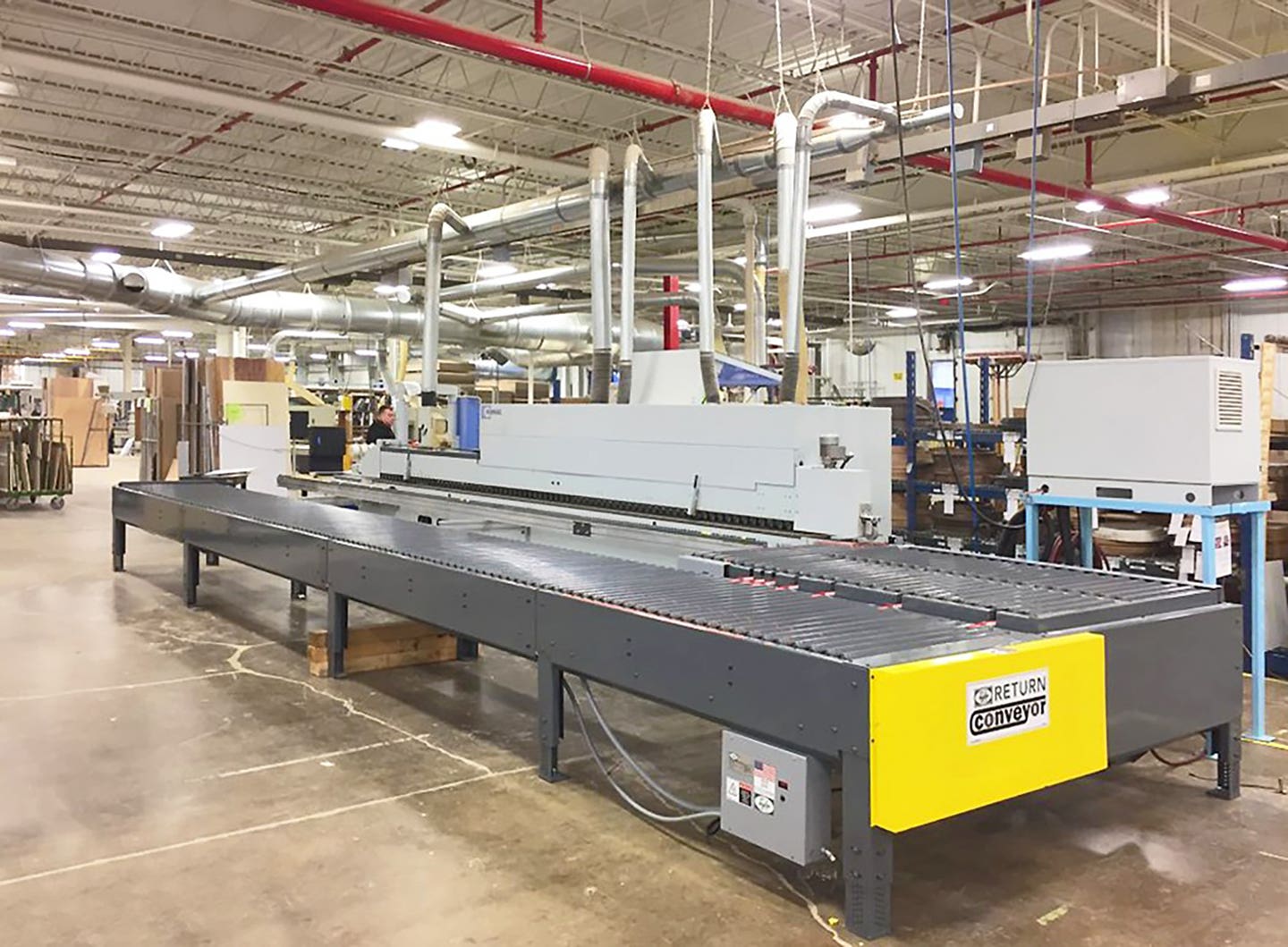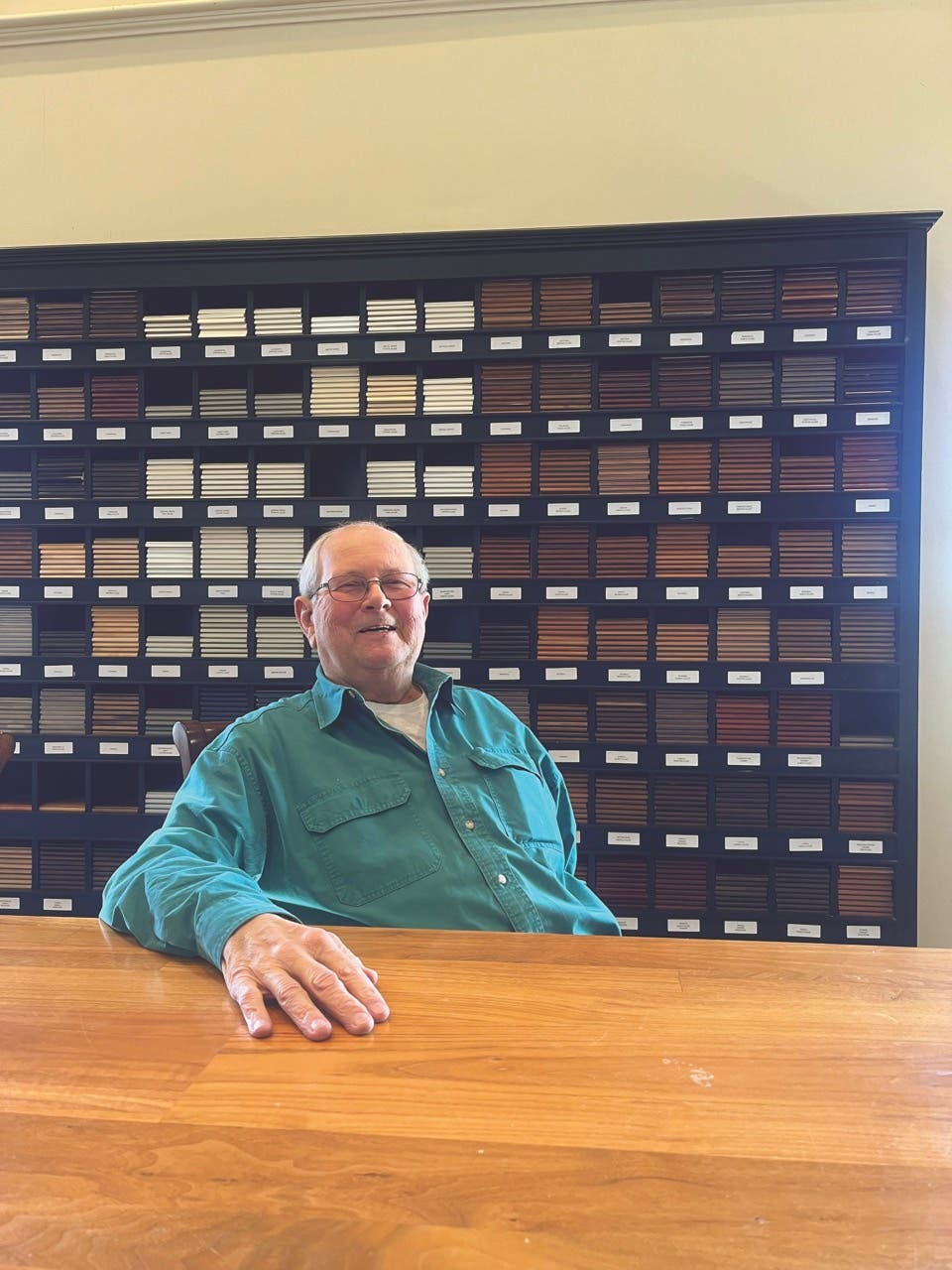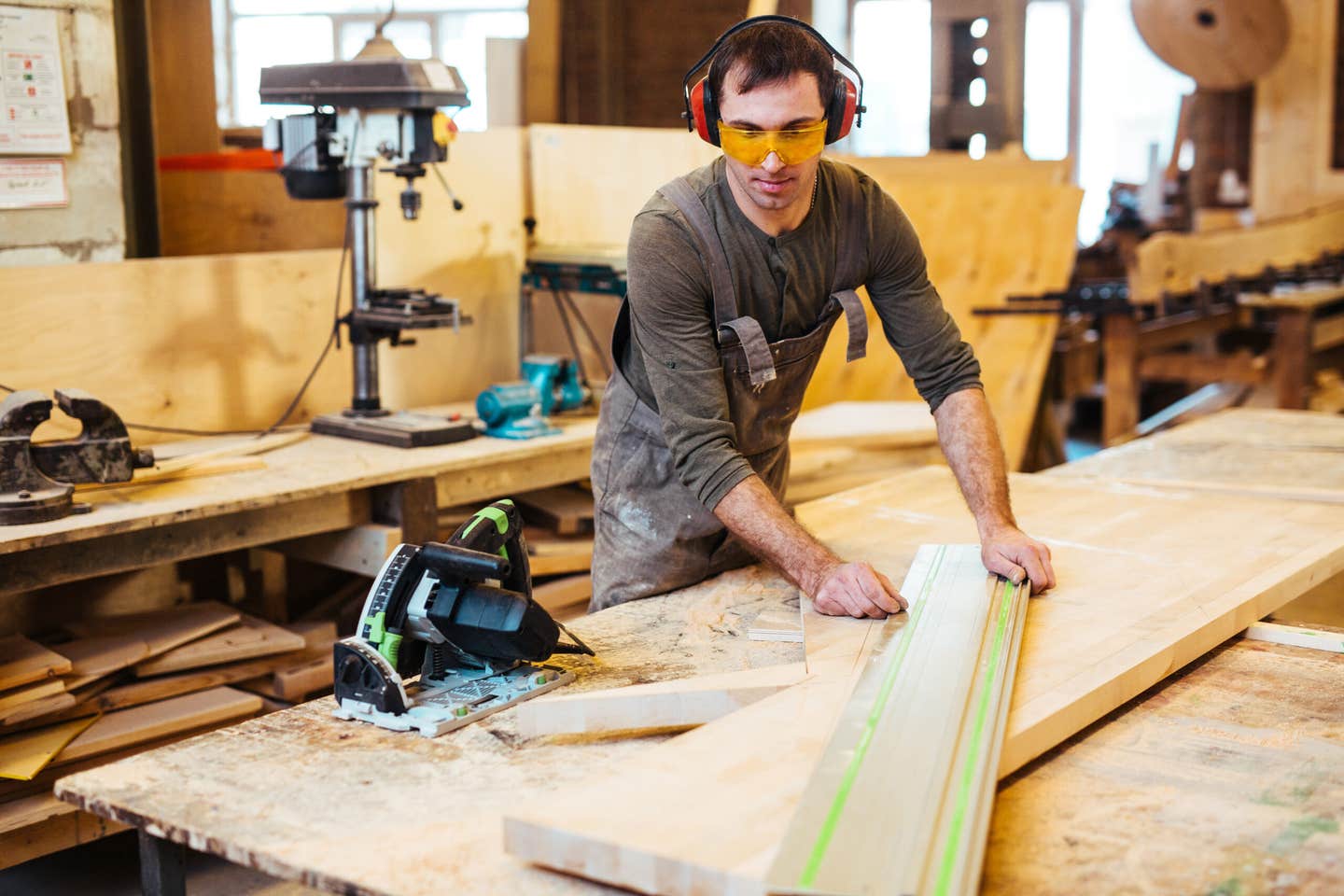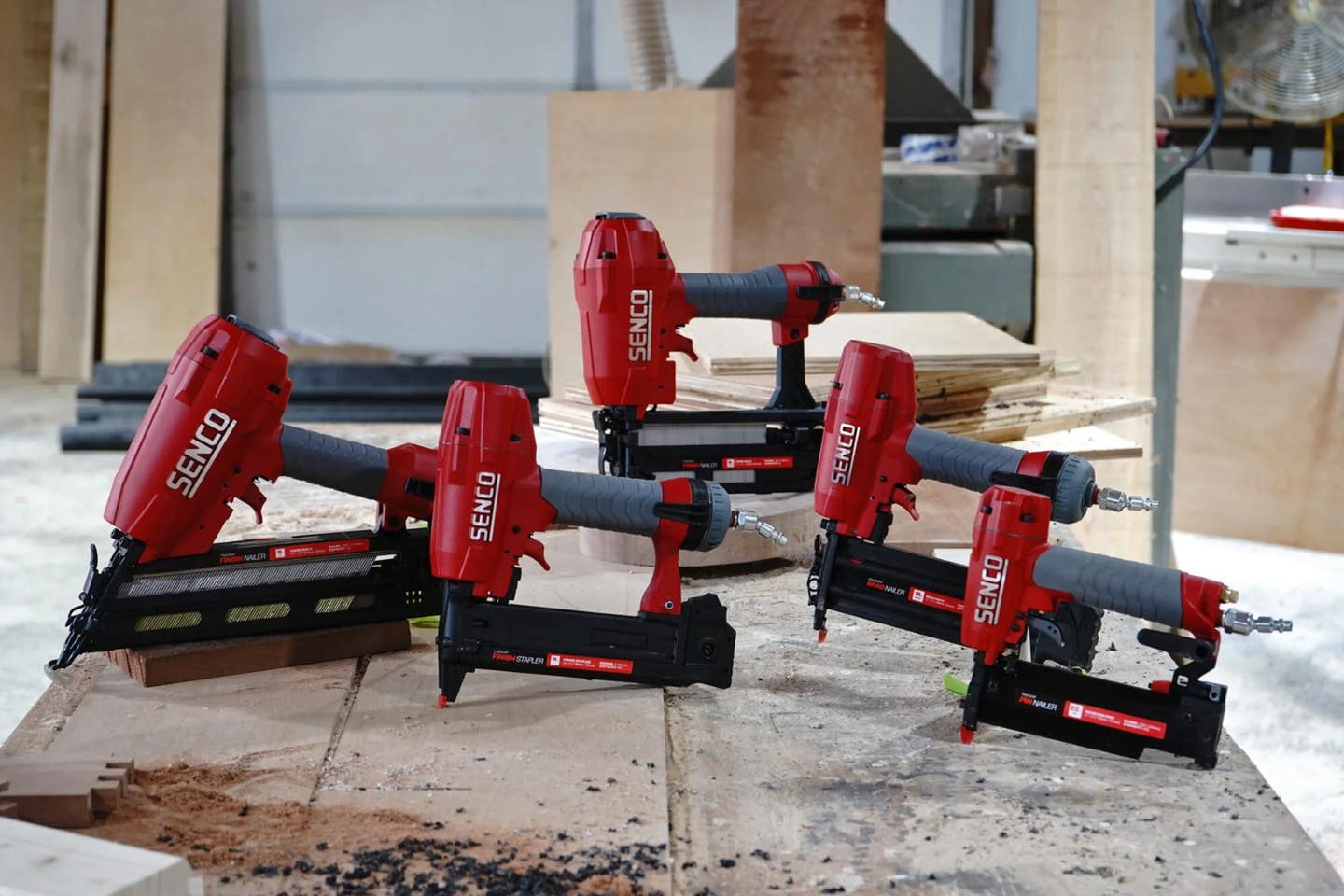Catering to churches
Mountain View Millworks went from doing mostly residential cabinetry and millwork to doing projects for religious establishments
Outside Mountain View Millworks in Hedgesville, W.Va., the buzzing and humming of equipment make the shop seem like a typical cabinet operation. Step through the doors, however, and there’s a stunning twist. Church parts in the making lay tidily on racks and work benches, getting their final touches before going into the religious establishments that now account for the company’s largest client base.
“Over the past 11 years, liturgical work has been 80 percent of our business. Up until 2011, we did about 90 percent residential cabinetry and millwork. The [Great] Recession is what sprung us into that and being in the right place at the right time,” says owner David Tressler.
Tressler, who has a crew of three skilled craftsmen, isn’t interested in making standard pews and podiums. His focus is on one-of-a-kind specialty woodwork, from ornate alters and confessionals to communion rails and choir stalls, and even elaborate windows and towers. The team travels the country to install their work, mainly to Catholic churches being revived with a Gothic makeover. The company has worked in about four dozen churches to date.
Finding his forte
Originally from Waynesboro, Pa., Tressler briefly studied computer science in college, but left to be a cabinetmaker, which he found much more exciting. After stints at two shops, he moved up quickly in the construction world, mastering all aspects of high-end commercial and residential work from fabrication to project management.
“I started a general contracting business when I was 25, and I started doing everything from building houses to building kitchens on site. As time went on, I got introduced back into architectural millwork. I first was doing installations for several companies through my business and then I got asked to go work for a high-end architectural business in Baltimore as an installer. I was only there a few months and then they moved me into estimating and project management.”
He eventually went to work for a millwork company in Martinsburg, W. Va., and wound up managing its large commercial casework projects. By 1997, he quit and formed a partnership, Lee Enterprises, with his craftsman friend Paul Lee who had a high-end residential clientele in the Washington D.C. area. The business was incorporated in 1998 as Mountain View Millworks.
At the end of 2000, Tressler bought out Lee, leased a large facility in Maugansville, Md., invested heavily in tools and machinery, and hired more help.
“At that time, things were going crazy, we were rocking. I had seven or eight employees in here. We were in the residential market and it was going great. The struggle, as with any other time, was getting decent help.
“The crash didn’t catch up with us until the end of 2009. That’s when it got really slow. At that point, I’d already whittled it down to three to four employees.”
Current help includes his foreman Levi Frusher, who’s been with Tressler for 21 years, Chris Myers (11 years), and Joe Stutts.
Well connected
During the economic lull, Tressler got the opportunity to work at Saint Joseph Roman Catholic Church on Capitol Hill, which spurred similar work thereafter.
“A friend of mine’s an architect in D.C. He said [St. Joseph’s] needed their doors duplicated, so we duplicated those doors. Then they asked if we could do more work inside the church, so the next thing we know we’re building pedestals for statues. Well, that architect now specializes in high-end churches, and as his business morphed, so did mine. He basically would get the jobs and design them and we would bring them to fruition. As time went on, we kept getting bigger and bigger jobs through him.”
As Mountain View’s reputation spread throughout the design community, Tressler and his team took on projects left and right. Now, they have about a dozen architects and designers they work for.
There’s an impressive gallery of church projects at mountainviewmillworks.com.
There’s a difference
Behind the scenes, project dealings are starkly different than cabinetry commissions, according to Tressler. The reason for the high volume of work in the Catholic church relates to ideas set forth by the Second Vatican Council, which in the early 60’s moved to attract more interest in the church.
“That’s when [the Vatican] decided to go through and modernize the churches. They removed the Romanesque-inspired architecture and put in all this modern design, and now the churches are going back. So now we’re going to all these different churches, taking out all the modern stuff and putting all the communion rails and Gothic work back in.”
The perfect example is Saint Dominic Catholic Church in Washington, D.C., which had its original millwork replaced with marble. Mount View brought it back in a project that lasted from 2012 to 2020.
Such a long timeframe isn’t unusual. “New churches have an architect that comes in, they do a design, they get their budget together and they hire you to build it and it’s pretty cut and dry,” Tressler explains. “But we do a lot of renovations, so a lot of times we’ll go in and look at the job and price it. Maybe a year or two goes by until they fundraise and get all their money together.”
He recalls an emotional reaction from a priest after delivering a commission to St. Mary’s Cathedral in Colorado Springs, Colo. earlier this year. “When we opened up the trailer and he saw what we had, he said ‘Oh, we have to get on the architects, we need a new ambo, new confessionals.’”
Diversified offerings
While it’s fun, rewarding and lacks competition, Tressler doesn’t necessarily want to be pigeonholed as doing only church work. He takes pride in doing things other shops can’t, accepting what he can if he has the time, from cabinetry commissions, making profile moldings, and more.
“The locals will bring things in. Maybe they got a new fridge and their cabinets are too low. We’ll cut them down and make them fit. The last time we did a job locally was when Covid broke out. We did a big custom closet. Basically, our residential work is in D.C., Montgomery County (Md.), and northern Virginia.”
But the church work has made a sentimental impact. He appreciates its permanency coupled with gratification from all who will get to enjoy it.
“It’s nice to see the look on the parishioners’ faces and all that, and they appreciate it. And we know that when I’m dead and gone people are still appreciating that work. I’ve done hundreds of residential projects, and over time they’ll be ripped out and gone. I know the churches are not going to do that so quick.”
Mountain View’s current project is at St. Augustine Cathedral Parish in Bridgeport, Conn., which includes revamping the sanctuary with a new ambo with Mary and Joseph shrines, and reredos. Tressler would like to continue these projects as long as possible but says everything depends on adequate staffing.
“The shop foreman and I are getting older. We’re getting to the point where we would like to find young blood in here. We’re getting too old to physically do some of this work. A lot of these jobs require rigging and scaffolding and climbing, and quite frankly, some of the stuff is so complex, we could not just hand this off to a general contractor. It needs to be handled properly.”
This article was originally published in the July 2022 issue.



